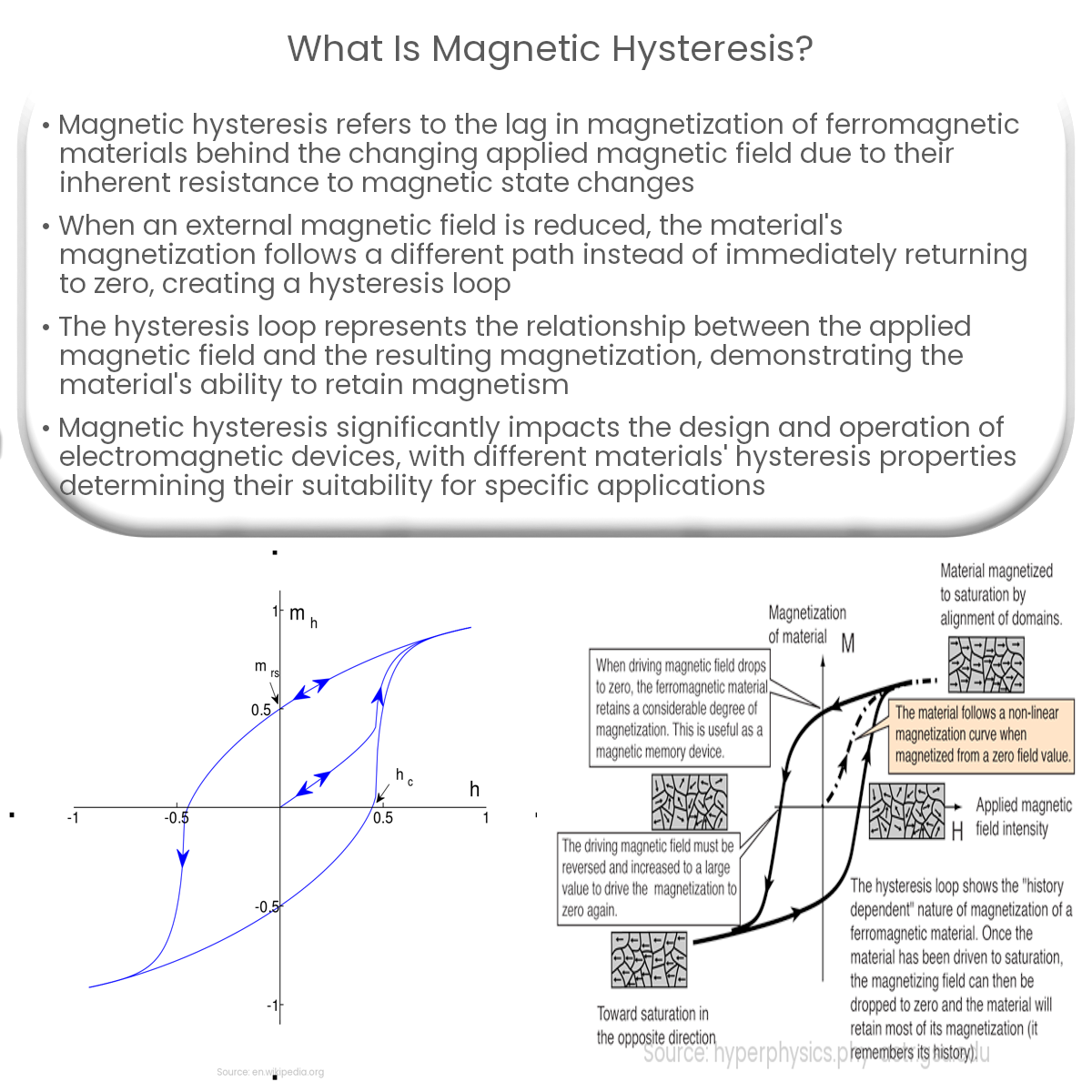Magnetic hysteresis is the lagging of magnetization in ferromagnetic materials when the magnetic field changes, resulting in a hysteresis loop.
Magnetic Hysteresis
Magnetic hysteresis is a phenomenon observed in ferromagnetic materials, which refers to the lagging of magnetization behind the changing applied magnetic field. This effect is the result of the material’s inherent resistance to changes in its magnetic state, often caused by the alignment and realignment of magnetic domains.
Understanding Hysteresis
When a magnetic field is applied to a ferromagnetic material, the magnetic moments within the material align in the direction of the field. As the applied field increases, the material becomes increasingly magnetized until it reaches saturation, the point at which all the magnetic moments are fully aligned. If the external magnetic field is reduced, the material’s magnetization does not immediately return to zero; instead, it follows a different path, creating a hysteresis loop.
Hysteresis Loop
The hysteresis loop is a graphical representation of the relationship between the applied magnetic field (H) and the resulting magnetization (B) in a ferromagnetic material. This loop demonstrates the material’s magnetic history and its ability to retain magnetism even after the removal of an external field.
- Initial magnetization: The material is first magnetized from a demagnetized state by applying an increasing magnetic field.
- Reaching saturation: As the magnetic field increases, the material’s magnetization approaches saturation, where all magnetic moments are aligned.
- Reducing the magnetic field: The magnetic field is then reduced, and the material’s magnetization decreases, following a different path than the initial magnetization.
- Coercivity: The magnetic field is eventually reduced to zero, but the material still retains some residual magnetism. A reverse field must be applied to bring the magnetization back to zero, referred to as the coercive field.
- Remanence: The material’s magnetization remaining after the removal of the external field is called remanent magnetization or remanence.
Applications and Importance
Magnetic hysteresis plays a significant role in the design and operation of various electromagnetic devices, such as transformers, inductors, and magnetic storage media. The hysteresis properties of different materials are crucial for determining their suitability for specific applications. For instance, materials with low coercivity and remanence are used in transformer cores to minimize energy loss, while materials with high coercivity are employed in permanent magnets and magnetic storage devices.


